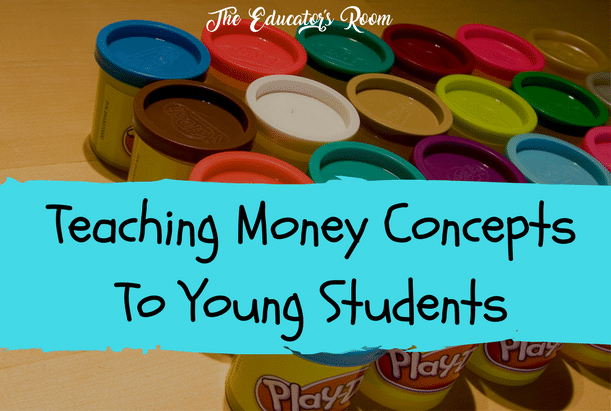The past few years I have become so much more conscientious about not only teaching basic money skills to my second graders, but also teaching the concept of money and saving. I have noticed that these concepts don’t seem to be taught much at home anymore. Sure it’s easy for me to implement a token system in my classroom, but what used to work beautifully for learning how to manage ‘money’ just doesn’t seem to drive home what I’m trying to get across as far as earning, saving, spending and so forth any longer. When I started my search for an economics curriculum I found that most information was geared toward middle school and high school students.
Enter, Playdoh Economics: Motivating Activities for Teaching Economics to Elementary and Middle School Students, by Harlan R. Day.
AMAZING!
This curriculum, made up of 15 lessons, teaches concepts like goods and services, production, scarcity, consumers, producers, trade, money, specialization, capital, saving and investing, market price, costs and profits, inflation and Gross National Product, with two tests included. It teaches these concepts with not only actual lessons, but with hands-on instruction for the students to demonstrate their learning. And the best part? It uses Playdoh to teach them! The kids LOVE this method of learning. I love everything about this curriculum, especially that you don’t necessarily have to teach the lessons in order for them to make sense. You can use the lessons as stand-alones to supplement curriculum you are using.
[bctt tweet=”Kids LOVE learning about money with Play Doh!” username=”EducatorsRoom”]
I also love that it teaches across such a broad spectrum of learners. I’ve used this material with elementary and middle school students. The lessons are written in language that is easily explained to your younger learners, and you are able to give examples of the vocabulary based on the age group you are teaching. For example, if you were teaching the concept of goods to your younger learners, you would use examples such as the toys the kids were interested in at the time, or even the school supplies they are using. Examples would be changed up a bit for your middle schoolers to the current electronics or whatever else they may be interested in currently. The definitions and stories in the curriculum are applicable across the board.
In addition, it’s not a tightly-structured curriculum. You can teach one lesson each day or you can spread the lessons out to once a week. It is very easy to pick up from where you left off and the kids seem to follow along without any difficulty.
I’ve added all kinds of supplemental, hands-on activities of my own while teaching these lessons, from a pretend classroom grocery store, to a treasure box that the kids can make purchases from when they’ve earned enough classroom money, to games on my smartboard. The curriculum is flexible enough to allow for a variety of additional activities, but it also can stand alone using the activities that it includes.
How do you teach economics in your classroom?




